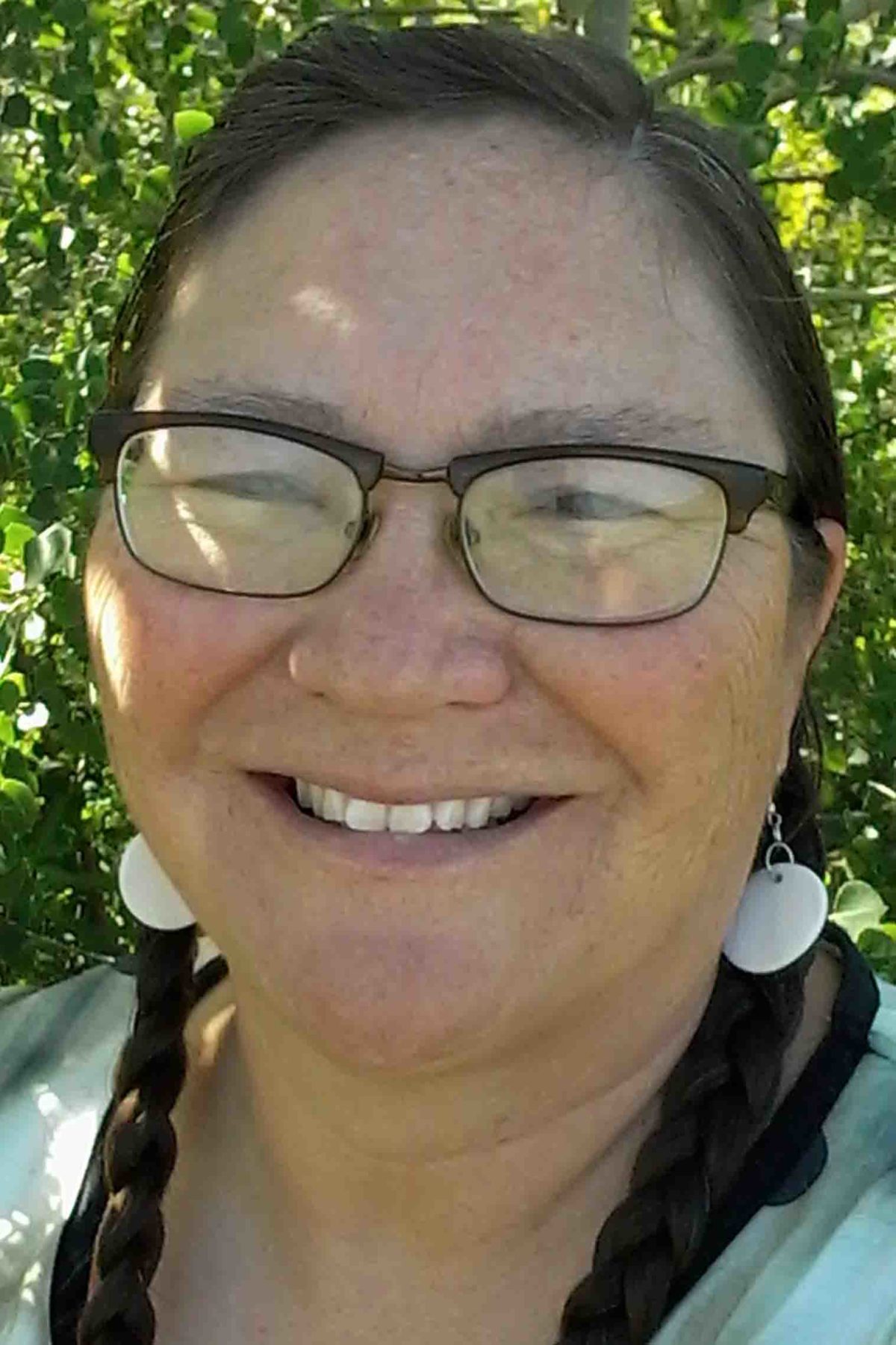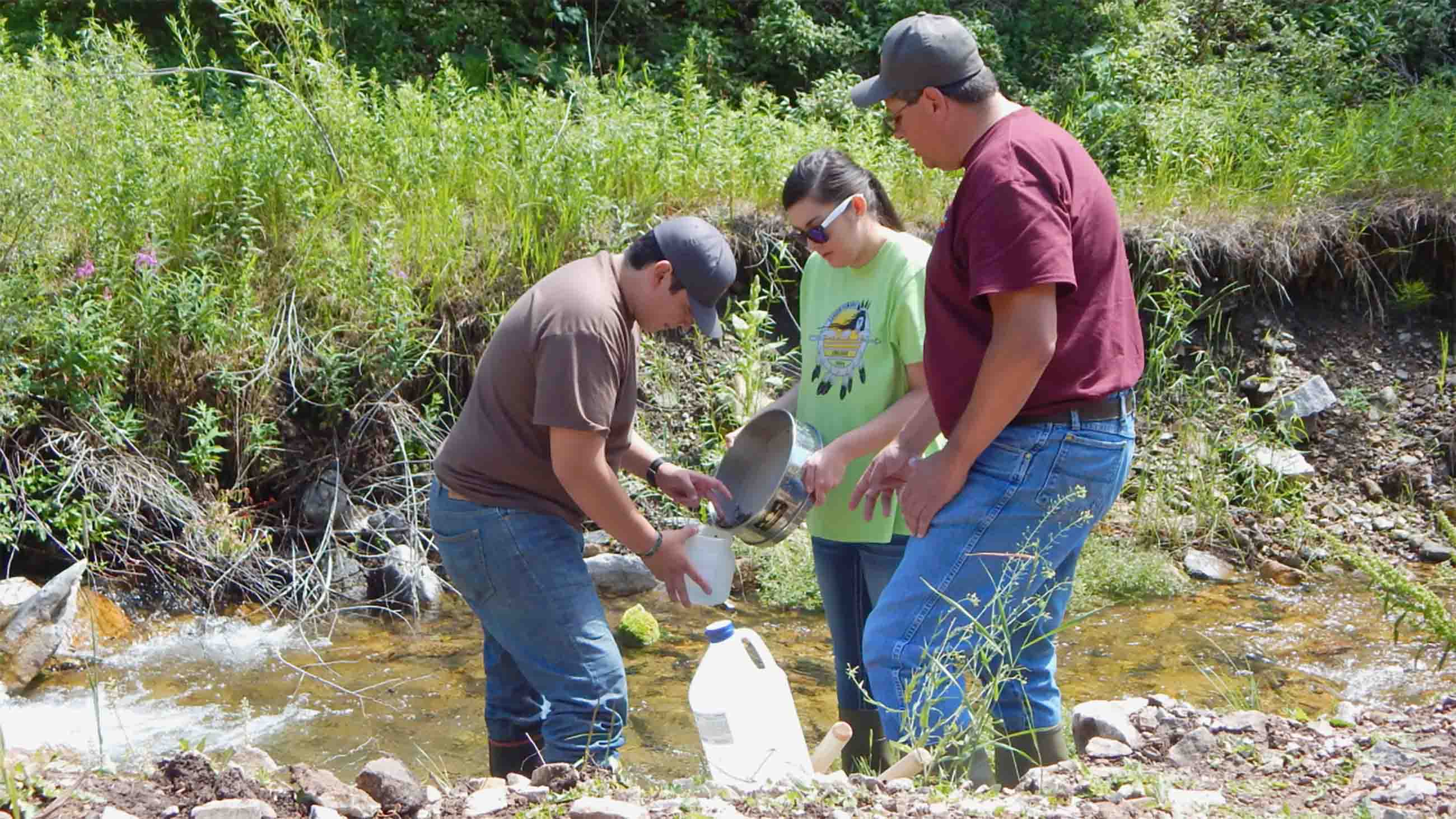Five Questions for Rosalyn LaPier on Native Americans in Science
Rosalyn LaPier is a rarity. A member of the Blackfeet Tribe and an associate professor of environmental studies at the University of Montana, she is one of only 700 Native Americans with a doctoral degree in the STEM fields — science, technology, engineering, and mathematics — who are full-time faculty members at U.S. colleges and universities.

“Sometimes for indigenous people, it’s hard to think of somebody as a mentor who’s not much older than they are, or doesn’t have much more experience.”
Visual: Courtesy of Rosalyn LaPier
Before entering academia, LaPier, now 53, spent 15 years on the Blackfeet reservation in Montana, working with a nonprofit organization to revitalize Native American language and document traditional knowledge. Community elders encouraged her to go back to school, and eventually she took their advice, gaining a Ph.D. in environmental history at the University of Montana.
Now she is part of a new effort to create better opportunities for Native Americans in STEM higher education. The Willow AGEP Alliance — a joint effort of the University of Montana and two tribal colleges, Salish Kootenai College in Montana and Sitting Bull College in North Dakota — began this past August. The four-year program, funded by the National Science Foundation, focuses on mentorship and includes a research component to examine variables that might support or hinder professional development among Native Americans in STEM. (One common problem that LaPier says she has experienced: Minority educators are often bogged down by “invisible labor” — unpaid guidance and support to students who might flounder without it.)
The project is a concentrated effort that could have far-reaching implications for universities across the country. For this installment of the Undark Five, LaPier and I discussed the Willow Alliance, as well as challenges for Native Americans in STEM fields and the fundamental differences between indigenous and Western science, a topic of her new book, “Invisible Reality: Storytellers, Storytakers, and the Supernatural World of the Blackfeet.” Our conversation has been lightly edited for clarity and length.
UNDARK — Mentoring is central to the Willow Alliance. Why is that? And what is missing for indigenous people in STEM at universities?
Rosalyn LaPier — If you come from an indigenous family or community, you’re used to going to elders and older family members when there’s an issue. Or when they see an issue or concern, they’ll come to you. That’s what most indigenous people are used to and what they’ve usually grown up with. Normally in an academic setting, your dissertation adviser and your dissertation committee are the people who provide initial mentorship, and those people are not often older. And so, sometimes for indigenous people, it’s hard to think of somebody as a mentor who’s not much older than they are, or doesn’t have much more experience.
I work right now at the University of Montana, which is a public state university system, and this institution doesn’t really have a system in place to provide mentorship to Native faculty. What the university is trying to do with this project is to merge those two worlds of what usually happens in an academic setting and what indigenous people are accustomed to within our own families and communities.
UD — And those differences can also extend to science itself. How does indigenous science differ from Western science?
RL — I think they have different kinds of methodologies in terms of how they look at the world around them. I would argue that they’re both, at a very basic level, based on observation, testing ideas, and figuring out the way that the world actually works. But I think that the way that Native people approach the natural world, or what some people now call “indigenous science,” is just an understanding of how the natural world works.
They also have the added idea that there are specific relationships that humans have with nature, and that sometimes those relationships are based on religious ideas. Whereas I would say that in Western science, we definitely separate those two; there’s sort of Western science and then there’s religion, but they’re two separate disciplines, two separate things.
UD — When scientists working in Native American communities avoid religion, what could they miss out on?
RL — I think there has been over time an increased awareness of indigenous knowledge, an awareness of indigenous science. And there have been partnerships in different places around the world, where scientists are partnering with indigenous people to understand the natural world. But a lot of times, that understanding kind of stops once indigenous people start talking about religious practice.
And that’s important, I think, for two reasons. On the one hand, I think it’s important for us to understand human societies, so purely from almost an anthropological point of view, for us to understand human society we should understand all parts of human society. If we go to a community in the Pacific and say, “Tell us about the rising waters, tell us about water currents, tell us about changing fish populations,” people can discuss those things from a completely scientific understanding. But we don’t often say, “Well, how are you thinking about this? What is your cosmology? How is this connected to your worldview?” so we don’t get the complete story. The second part of that is, besides missing a part of the human story, we as scientists, if we’re going into a community and only taking out one piece of understanding, and we don’t understand everything from their perspective, we really are not getting the full story.
UD — How will the Willow Alliance grapple with these conflicts between indigenous and Western science?
RL — One of the things they’re trying to do with the Willow project is to create a new model, a new method, for providing mentorship to indigenous people working in STEM fields. They’ll need to consider the idea that indigenous people are used to a certain kind of mentorship from elders or older family members, but also that, usually in indigenous communities, religion is central. How do you incorporate that into a mentorship program that is used within the state system, at a state-run institution where there is supposed to be a separation of church and state?
I think one of the reasons why the National Science Foundation is supporting this project is to figure out, once Native people are hired in the STEM fields, what kind of mentorship can keep them moving through the system — being junior faculty, being promoted, going through tenure, continuing to keep your research on track, getting your research published or funded. I think it’s amazing that the National Science Foundation is seeing this as an important time to be funding this kind of program and an important group of individuals to work with. Hopefully a really good tool gets created out of this that other institutions can use to help the next group of indigenous scholars in STEM move through the system.
UD — Have you seen progress over the course of your career in terms of the number of Native Americans in science?
RL — There’s still a really small number of Native Americans in STEM, especially at the university faculty level. For example, I know of only three other Native American professors at research universities in environmental studies or sciences, and all four of us are Native women. But there are probably more Native students now than ever in the STEM fields. You especially see this when you go to some of the big academic conferences. I was recently at SACNAS [Society for Advancement of Chicanos/Hispanics and Native Americans in Science] and that conference had over 4,000 people there; the majority were students. We can and we will increase our numbers with investments such as this NSF-funded project.
Sarah Amandolare is a freelance journalist whose work has appeared in The New York Times, High Country News, The Guardian, and other publications.










